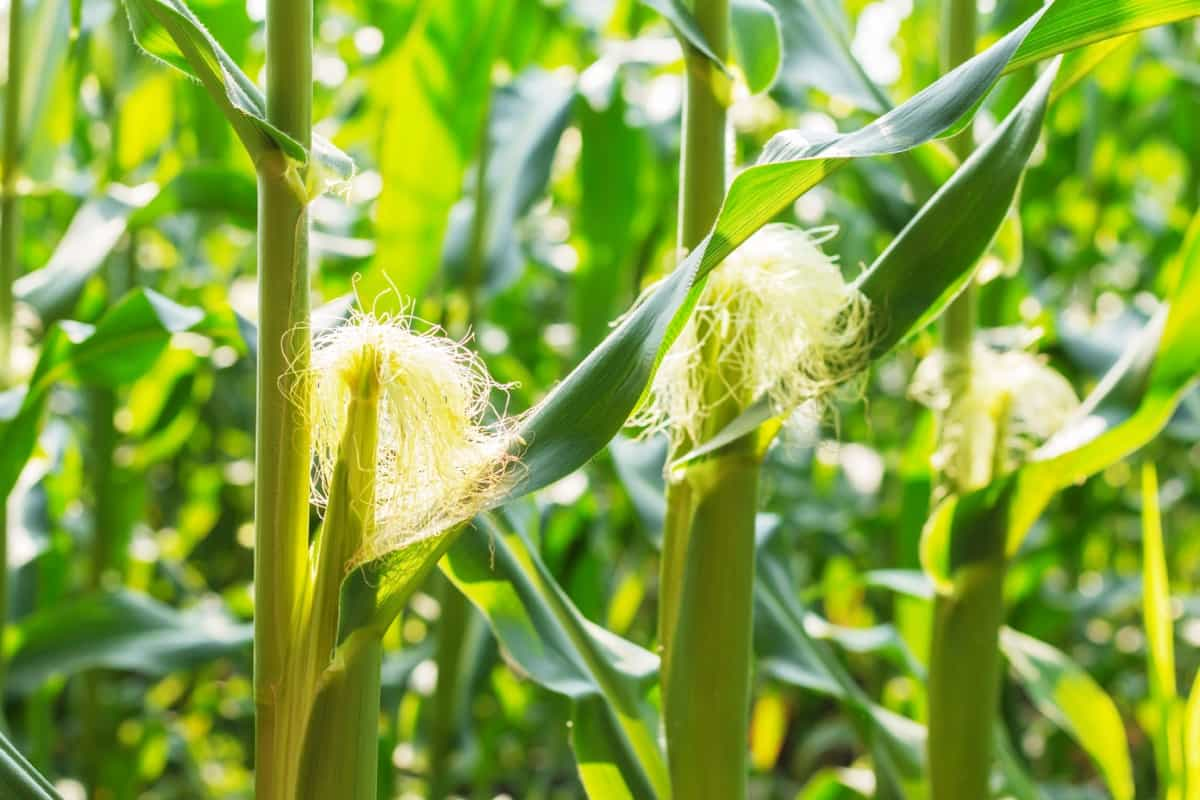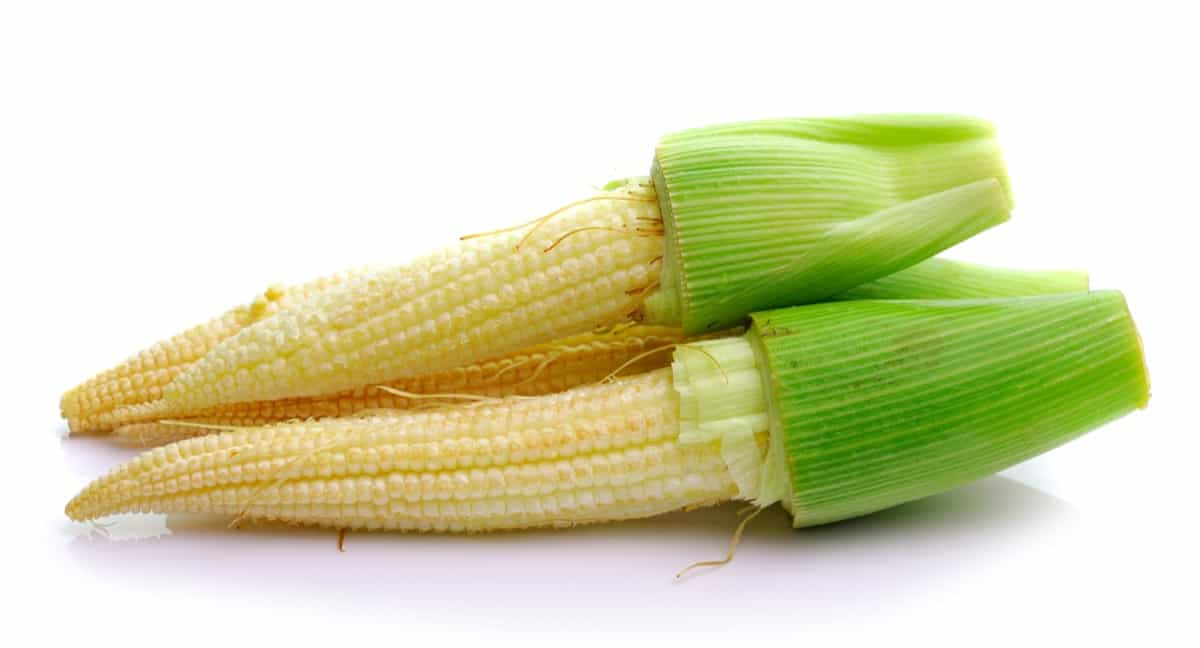Baby corn, the miniature version of regular corn, is a delightful and nutritious vegetable that has gained popularity in various cuisines worldwide. Not only does it offer an array of health benefits, but it’s also relatively easy to grow. Below we learn the entire process on how to grow baby corn in pots on the terrace, from selecting the right seeds and preparing the soil to harvesting your crops.

How to Grow Baby Corn on Terrace
Understanding Baby Corn
Baby corn, also known as young corn or baby sweetcorn, is the immature version of regular corn harvested early, just after the silk has emerged. Unlike mature corn, baby corn is tender and has a more delicate flavor. It is used in salads, stir-fries, soups, and desserts. Rich in vitamins, minerals, and fiber, baby corn offers numerous health benefits, making it an excellent addition to a balanced diet.
Selecting Baby Corn Seeds
Several varieties of baby corn seeds are available in the market, and choosing the right one is essential for success. Look for labeled seeds as “baby corn” or “early harvest” varieties. Some popular baby corn varieties include Chires, Bonus, and Temptation. You can find these seeds in local gardening stores or order them online.
Preparing the Soil
To grow baby corn, you need fertile, well-draining soil. Begin by clearing the terrace area where you plan to grow the baby corn. Remove any weeds, debris, or stones. Prepare the soil by adding a generous amount of compost or well-rotted manure. This will increase the soil’s fertility and improve its water-holding capacity. The ideal soil pH for baby corn is between 6.0 and 6.5, so if necessary, use a soil test kit to check the pH and amend the soil accordingly.
Container Selection and Setup
Baby corn plants require ample space for root development, so choose large containers with a minimum depth of 12-18 inches. Ensure that the containers have drainage holes at the bottom to prevent waterlogging. Fill the containers with the prepared soil, leaving a few inches of space at the top. Place the containers in an area on your terrace that receives at least six hours of direct sunlight daily. Baby corn plants need plenty of sunlight to thrive and produce healthy ears.
Seed Germination and Transplanting
Before sowing the seeds, soak them in water for 12-24 hours to speed germination. Then, sow the seeds in small pots or seed trays filled with seed compost. Place the seeds about 1-1.5 inches deep and 3-4 inches apart. Water the seeds gently and keep the soil moist but not waterlogged. Germination usually takes 7-10 days.
In case you missed it: How to Grow Sweet Corn in Your Home Garden: Pots, Backyard, and Terrace

Once the seedlings have grown 3-4 inches tall and developed two sets of leaves, they can be transplanted into the prepared containers. Transplant the seedlings gently to avoid damaging the roots. Space them at least 12 inches apart in rows, with a minimum of 18 inches between rows. This will ensure adequate air circulation and minimize the risk of disease.
Watering and Fertilizing
Baby corn plants need consistent moisture to grow properly. Water the plants deeply and regularly, keeping the soil moist but not waterlogged. On hot days, you may need to water the plants more frequently. Fertilize your baby corn plants with a balanced liquid fertilizer (e.g., 10-10-10) every 2-3 weeks, following the manufacturer’s instructions. Fertilizing your plants will ensure they receive the nutrients for healthy growth and development.
Pest and Disease Management
Baby corn plants can be susceptible to various pests and diseases. Common pests include aphids, corn earworms, and cutworms. Check your plants for infestations and apply organic or chemical pesticides. Ladybirds and lacewings may also control pests. To prevent diseases like corn smut and rust, maintain proper air circulation and avoid overhead watering, creating a damp environment conducive to fungal growth. If you notice any signs of disease, remove affected plant parts and treat the plants with a suitable fungicide.
Pollination
Baby corn relies on wind for pollination. However, on a terrace, wind movement may be limited. To ensure successful pollination, you can assist by gently shaking the plants daily during the flowering stage. This will help release pollen from the tassels onto the silk, increasing the chances of fertilization.
Pruning and Thinning
Pruning and thinning baby corn plants can help improve air circulation and sunlight penetration, leading to healthier plants and better yields. Thin the plants by removing weak or overcrowded seedlings, leaving only the strongest ones to grow. Prune lower leaves and any secondary shoots that emerge from the base of the plant. This will direct the plant’s energy toward ear production and produce a more productive harvest.
Harvesting Baby Corn
Baby corn should be harvested when the ears are small, usually 2-4 inches long, and before the kernels develop. This stage typically occurs 1-2 days after the silk has emerged. To harvest, hold the base of the ear and twist it gently until it detaches from the stalk. Harvest baby corn in the morning for the best flavor and tenderness.
Support for Baby Corn Plants
As baby corn plants grow taller, they may need support to prevent them from toppling over due to their height or strong winds. You can provide support by installing stakes or a trellis system. When the plants reach about 2-3 feet tall, tie them loosely to the stakes or trellis using soft twine or cloth strips, being careful not to damage the stalks.
Companion Planting
Companion planting involves growing different plants together to enhance growth, deter pests, and improve overall plant health. Some beneficial companion plants for baby corn include beans, peas, and squash, which can help fix nitrogen in the soil and provide shade to the corn’s roots. Herbs like basil, dill, and marigolds can help repel pests and attract beneficial insects. Additionally, planting flowering plants like sunflowers and zinnias can attract pollinators, assisting in pollination.
In case you missed it: How to Start Corn/Maize Farming in the USA: Production Guide for Beginners

Conclusion
Growing baby corn on your terrace can be a rewarding experience, yielding a delicious and nutritious addition to your meals. With proper care, attention, and the right techniques, you can enjoy a bountiful harvest of baby corn in the comfort of your own home. By following this comprehensive guide, you’ll be well on your way to cultivating a successful baby corn crop on your terrace.
- Feed Your Flock for Less: Top 10 Tips to Save on Chicken Feed
- Ultimate Guide to Ossabaw Island Hog: Breeding, Raising, Diet, and Care
- Hatching Answers: The Top 10 Reasons Your Chickens Aren’t Laying Eggs
- Eggs and Economics: Breaking Down the Cost of Raising Backyard Chickens
- Defend Your Greens: Proven Methods to Keep Iguanas Out of Your Garden
- Ultimate Guide to Cinnamon Queen Chicken: A Comprehensive Guide for Beginners
- Ultimate Guide to California Tan Chicken: Breeding, Raising, Diet, Egg-Production and Care
- Ultimate Guide to Marsh Daisy Chicken: Breeding, Raising, Diet, and Care
- 10 Types of Chicken Farming Businesses You Can Start for Profits